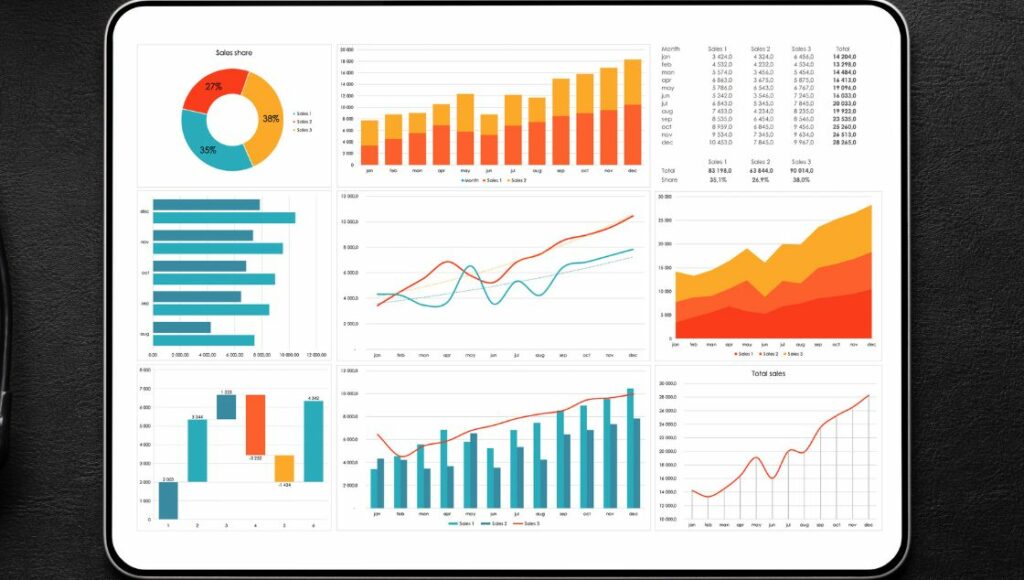How to Use Excel Scatter Plots for HR Analytics: Visualizing Employee Performance and Retention
Human resources (HR) analytics involves collecting and analyzing employee data to uncover insights and predict outcomes that impact the workforce. Data visualization is key to HR analytics, helping HR professionals spot trends and patterns effectively.
Among the many data visualization tools available, Excel scatter plots stand out for their simplicity and versatility in analyzing relationships between two variables or metrics. For HR departments, scatter plots can provide valuable insights into key areas like employee performance and retention when created correctly.
This article covers how to use Excel scatter plots to visualise connections between different HR metrics.
What is a Scatter Plot?
A scatter plot (aka scatter chart, scattergram) is an X-Y graph showing the relationship between two numeric variables. It displays a collection of points plotted using one variable as the horizontal X-axis and the other as the vertical Y-axis.
For HR data, typical metrics used in scatter plots include:
Employee Performance (X-axis)
- Sales revenue
- Productivity scores
- Performance evaluation ratings
Employee Retention (Y-axis)
- Tenure
- Turnover rate
- Engagement scores
The patterns and clusters formed on the scatter plot indicate correlations and other insights like:
- Direction of relationship (positive, negative or none)
- Strength of relationship (strong, moderate, weak)
- Outliers
Steps to Creating a Scatter Plot in Excel

Step 1: Collecting and Preparing Data
Start by gathering relevant HR metrics in an Excel table or spreadsheet. Data should be normalized to a common scale and cleansed to remove errors.
Step 2: Selecting Data for Scatter Plot
Decide which variables to plot comparing employee performance (for the X-axis) and retention (for the Y-axis). For example, sales revenue vs. tenure.
Step 3: Inserting a Scatter Plot in Excel
Go to the Insert tab in the Charts group and click the Scatter chart option. Select the chart sub-type and input the table data range when prompted.
Step 4: Customizing the Scatter Plot
Under the Design and Format tabs, you can enhance data visualization by adding titles, data labels, gridlines, legends, and so on.
Visualizing Employee Performance with Scatter Plots
HR can apply scatter plots to identify connections between different metrics relating to employee performance, such as:
Example 1: Tenure vs. Performance
Plot tenure (Y-axis) against average sales revenue per employee (X-axis). Long-tenured staff correlating to high revenue levels indicate good returns on employee development programs.
Example 2: Training vs. Productivity
Compare training hours completed (Y-axis) vs. productivity score (X-axis). Direct relationships show effective skills training, while deviations may indicate evaluation issues.
Visualizing Employee Retention Using Scatter Plots
For retention analytics, possible uses of Excel scatter plots include:
Example 1: Tenure vs. Retention Score
Retention score from exit interviews or surveys can be plotted against tenure. Patterns may emerge around low scores for short tenures, indicating poor onboarding.
Example 2: Engagement vs. Turnover Rate
Plot engagement rating (X-axis) against turnover rate in percentage (Y-axis). A negative correlation implies a link between engagement and retention levels among staff.
Using Trendlines for Predictive Analysis
Adding a linear trendline to a scatter plot of data points can help visualize the overall trend and direction of the data. Using linear regression, the trendline mathematically calculates the best straight line that fits the data. Examining the trendline can detect if there is a positive, negative, or no correlation between the variables plotted on the X and Y axes.
Trendlines enable predictions about future outcomes to be made based on the current trajectory shown in the data. For example, a manager could plot past employee retention rates over time in workforce planning and analysis as a scatter plot. Adding a linear trendline could reveal whether retention is improving, declining or stagnant.
Based on the trend, the manager could use the trendline’s forward projection to predict future retention rates. This predictive analysis through trendline forecasting helps guide workforce planning decisions about hiring needs, retention incentives and budgets. Overall, trendlines provide a simple yet powerful form of predictive analytics based on historical data.
Best Practices for Using Scatter Plots in HR Analytics
Ensuring data accuracy and consistency
When creating a scatter plot, it’s important to use accurate data that is consistent across metrics. Check that the data has been entered correctly without errors and that the same definitions and collection methods were used so you can fairly compare the variables.
Aiming for visual clarity
The goal is to create a chart that conveys key insights effectively at a glance. Avoid cluttering the scatter plot with excessive points or elements that obscure patterns and trends. Apply formatting carefully to highlight what matters.
Providing contextual analysis
Refrain from expecting the data visualization to speak for itself – accompany scatter plots with an analytical narrative to interpret the implications revealed about relationships between factors.
Refreshing periodically with latest data
Insights have an expiry date as business environments evolve dynamically. Remember to update your Excel scatter plots on a regular schedule instead of relying on stale data that loses relevance over time. The most valid discoveries come from the freshest data sets.
Conclusion
Excel scatter plots and trendlines should be a key tool in the HR analytics toolkit. By plotting employee data sets like performance ratings over tenure, HR can visualize relationships and trends that would not be as evident in tables or charts. Following best practices – choosing relevant HR data sets with logical connections, appropriately scaling axes, labeling clearly and thoughtfully positioning trendlines – creates clear, insightful scatter plots. The correlations and trends revealed, like the link between tenure and performance, tell data stories that guide impactful HR decisions.
Overall, HR departments that embrace scatter plots for visualization can more deeply understand connections between employee satisfaction, engagement, retention and performance. With data-driven insights from scatter plots guiding workforce planning and talent management initiatives, organizations can expect improved recruiting, development and retention of top talent over time. Adopting scatter plot visualization puts HR in a stronger position for datadriven decision making.







